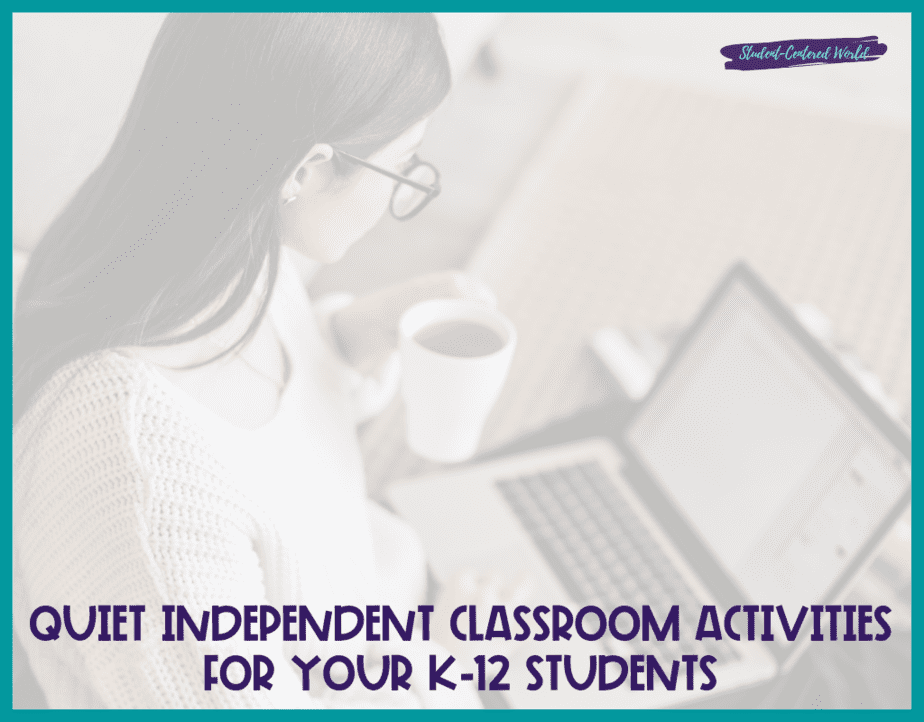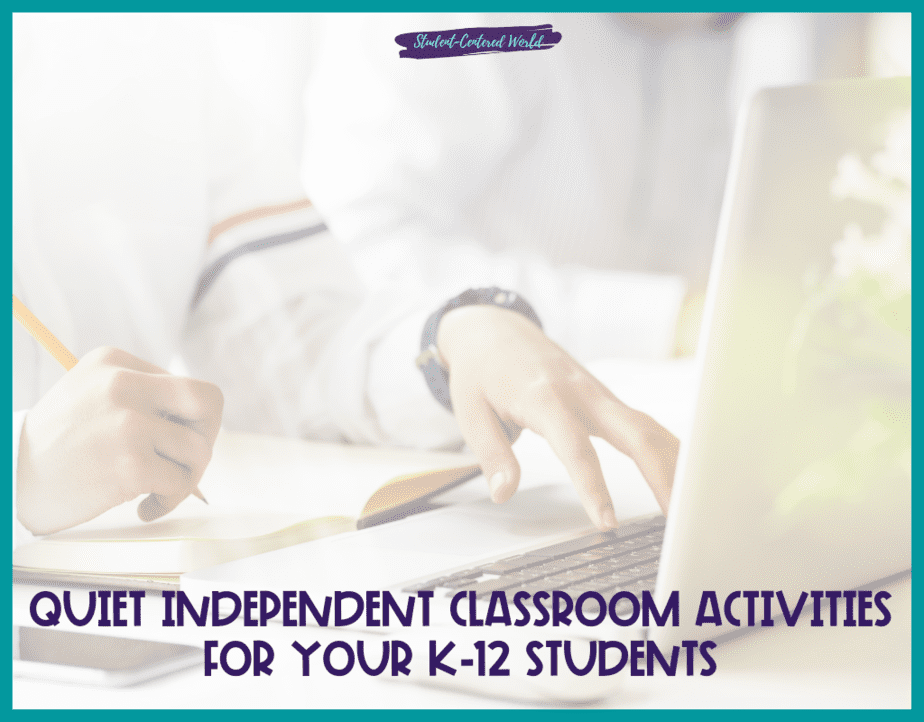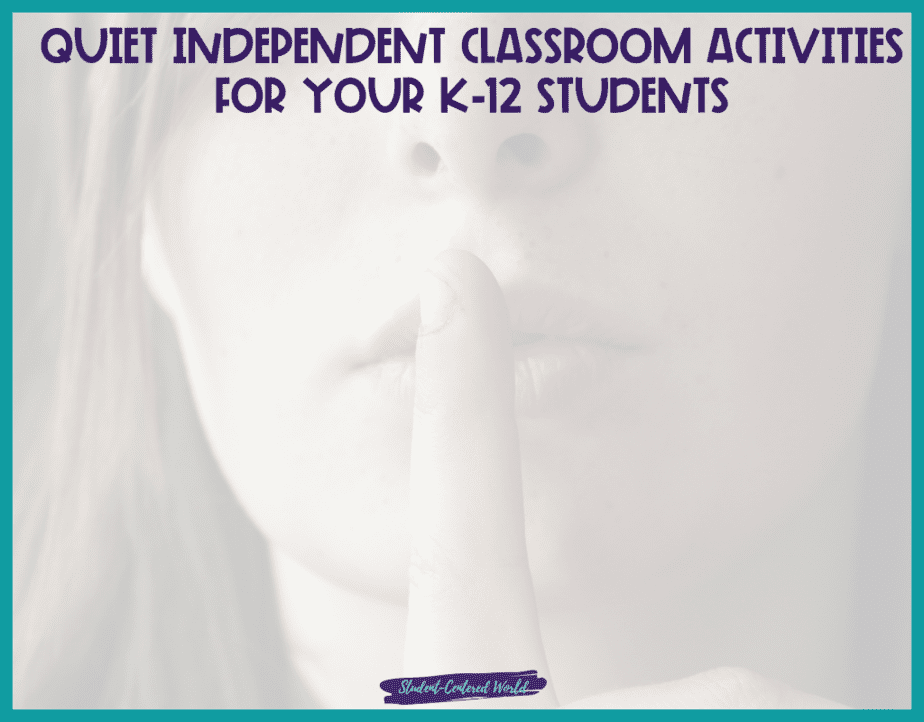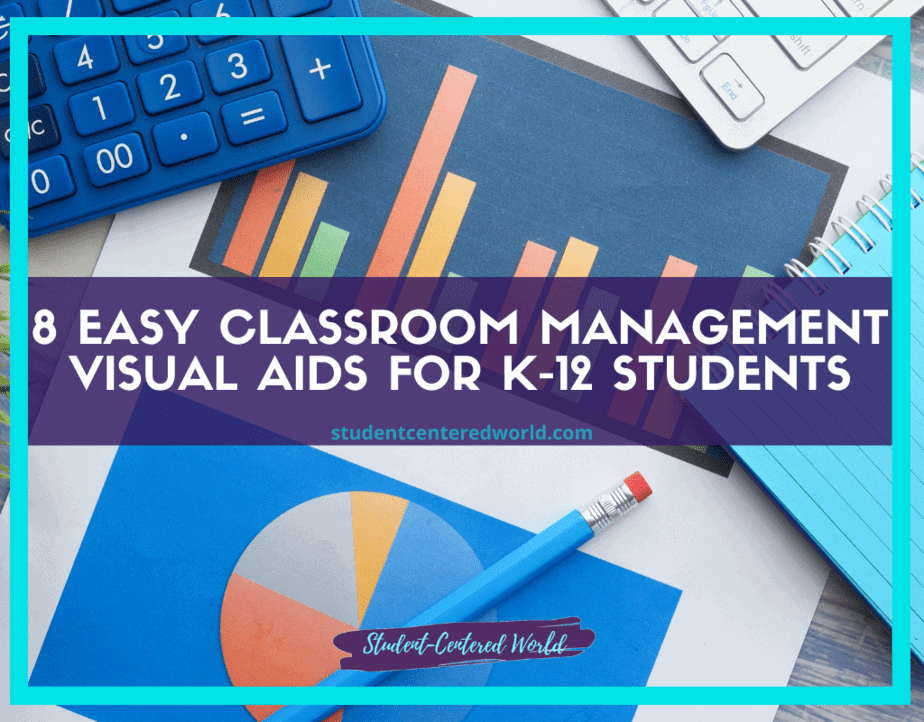Quiet Independent Classroom Activities for your K-12 Students
Sometimes, quiet and independent work is necessary for the classroom. This could be for any number of reasons, but searching for quiet independent classroom activities is a good start to finding options that will work for your students.
The key here is finding activities that will work for your students. This means they buy into the purpose of the activity and see it as more than just busywork. If your students are used to being constantly stimulated, then it might be a good idea to ease them into independent work with some short and easy activities at first.
Once they get used to working on their own, you can start to introduce more challenging tasks. As always, make sure these activities are aligned with your curriculum and that students are learning something while completing them.
The following are some activities that might help you get started. Keep in mind that these aren’t listed in order of difficulty, since they can all be modified to fit the needs of your students.
Quiet Independent Classroom Activities in Your Teacher Toolbox
Though most hands-on lessons are active and can be noisy, it is always beneficial to have some quiet independent classroom activities in your teacher toolbox as well. There are many activities that can be done independently or with a small group that can allow you to take care of other business while the students are engaged.
If your students are working on projects, it might be necessary for them to work independently for an extended period of time. For example, if your students are creating their own books, they may need time to work on their own without interruption. In this case, providing quiet independent classroom activities for them to do while they are working will help keep them focused.
There are also times when students need to have some downtime. This can be especially important in the younger grades, when students may not have had a lot of experience with calming themselves down. Providing quiet independent classroom activities can allow students to regain their focus when they are feeling overwhelmed or upset. This may also help reduce conflicts between students, as students who need time to themselves will be able to take care of business and return to the class on a more even keel than before.
For older students, providing some quiet time in the class can also be helpful. This could be during an exam or just before one when students need to focus on their studies. It might even be beneficial for students who are struggling with motivation to do some quiet independent classroom activities until they feel ready to rejoin the class. Of course, you want to make sure that this downtime doesn’t turn into an opportunity for students to pull out smartphones, tablets, and other gadgets that lessen the effectiveness of quiet time.
With all of these tips in mind, it might be hard to imagine what you could do with your students that would work as a quiet independent activity. Sometimes, some simple classroom management tools like timers can allow students enough independence to work on an activity quietly.

Ideas for Quiet Independent Classroom Activities
One of my favorite quiet independent classroom activities is a modified version of the game Concentration. In this game, students are given a set of cards with images on them. They then lay the cards out in front of them, face down. Students take turns flipping over two cards at a time. If the two images match, they keep the cards and take another turn. If the images do not match, the cards are turned back over and the next student takes a turn.
To modify this game for independent work, have students lay all of the cards out in front of them. They then take turns flipping over two cards at a time. If the two images match, they keep the cards and take another turn. If the images do not match, the cards are turned back over and the next student takes a turn.
This game can also be modified for different grade levels by changing the number of cards that are used and the complexity of the images on the cards.
Another activity that can be used as a quiet independent activity is creating word walls. Each time that students learn a new spelling or vocabulary word, they can create a card with the word and definition on it. These cards can then be added to a community word wall for other students to use as reference or study tools. In addition, students could also create their own personal words walls for use during quiet independent work time.
A final activity that can be used for quiet independent work is creating a storyboard. Students can either create their own storyboards or adapt a storyboard from a movie or book that they have read. This activity can help students with their comprehension skills, writing skills, and artistic abilities.
With these ideas in mind, you can help your students to focus and regain their concentration during quiet independent work time. Not only will this help them to be more productive, but it can also help reduce conflicts in the classroom.
You can adapt these activities for any subject area (yes, even math!). For instance, students could create a storyboard diagramming the steps of a math problem or create a vocabulary word wall for math terms. In science, students could diagram the steps of an experiment or create a table of data. The possibilities are endless!

As a teacher, it’s important to find ways to help your students take a break when they feel overwhelmed or upset. This may also help reduce conflicts between students, as students who need time to themselves will be able to take care of business without interruption. Sometimes, all students need is a few minutes of downtime to gather their thoughts and focus on their work again. Incorporating brain breaks is also an excellent way to utilize quiet independent classroom activities (think a coloring bulletin board, which is one of my favorites).
Helping Regulate Independent Activities
Classroom management tools like timers can allow students enough independence to work on an activity quietly. Students can work on their activity for a specific amount of time and then take a break. When the timer goes off, they can stop what they are doing and move on to something else. The benefits of timers in the classroom are well-documented, and they can be used for a variety of activities, including independent work time.
For younger grades, a good way to help regulate independent activity is by using picture cards. Have students take a card and complete the task on the card quietly for a specific amount of time. When time is up, they put the card back in the container and get another card. This can be used as a whole-class activity or as an individual activity. As students become older and can read, you can also use game cards for this same purpose.
You may also want to consider the use of quiet reading. Having a designated time when students are allowed to read quietly in their seats without being told is an excellent way to keep students focused on what they are doing.
It’s important that your students feel like they have some independence in the classroom. This can be done by giving them opportunities to work on activities quietly that interest them. When students are allowed to work on activities that they enjoy, they are more likely to be productive and stay focused. There are a variety of activities that can be completed independently, it’s just a matter of finding the rights activities that your students will buy into.

Doing this has a tendency to overwhelm, but it shouldn’t. The more ways you can create systems and processes that incorporate quiet independent classroom activities to make this concept normalized, the easier it will be for everyone involved. Do a quick walk around the room and quickly assess what students are working on. Seeing different projects going on can be inspiring for others who would otherwise feel lost.
Defining your parameters of independence is key. If you have students that need considerably more structure or support, then it’s important to lay out some general guidelines for how they should handle their work, especially when working independently. Again, it’s a matter of knowing your students and what will (and definitely won’t) work for them.
Stop Driving the Teacher Struggle Bus
Are you struggling with student engagement, apathy, or keeping your class on track?
💫💫 There’s hope! 💫💫
Join my free teacher workshop “Choosing Choice” and in just 60 minutes, you’ll craft a practical plan to revitalize your teaching. Discover the magic of student choice in boosting engagement, gain quick implementation ideas, and explore strategies for year-long success.
Unlike overwhelming workshops, my approach guides you in real-time, providing more classroom options, reducing stress, and giving you more personal time.
Plus, you’ll earn a 1-hour professional development certificate and have 7 days of access.
Don’t miss this chance to transform your teaching; click below to secure your spot now!






